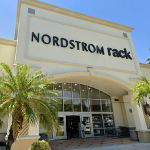Running USA reported that after more than two decades of consistent and often double-digit increases, the number of recreational athletes completing road races declined for the second straight year in 2015. The reduction was by a more significant margin than in 2014, when finisher totals edged down one percent.
Between 1990 and 2013, finisher totals skyrocketed from five million road race runners to over 19 million. For 2015, 17.1 million finishers were reported across all road race distances, a decrease of nine percent from the previous year.
For many in the industry, the data indicates an anticipated and healthy right-sizing centered in one sector of the running world.
“This data will not come as a surprise to many, and the sport of running, as well as the business of running, remains incredibly strong,” said Running USA CEO Rich Harshbarger.
While all race distances saw fewer numbers this past year, much of the decline came from shrinking numbers in the OCR (obstacle course races) sector. Between organizations going out of business and others seeing a 30+ percent decrease decline in finisher totals of up to 30 percent, over one million fewer runners participated in OCR races in 2015. The category includes events with interactive components like mud or paint, fitness challenges, and other creative twists.
While the number of races increased by 2,300 from 2014 to 2015, the number of races with 30,000 or more finishers went down from a total of nine in 2014 to six in 2015, according to the Running USA Largest Road Races Report. In addition, every race distance saw a decline of at least 3 percent, with the marathon and 5K distances seeing -8 percent and the 10K sitting at -9 percent.
However, the road running industry continues to show signs of strength.
According to Fortune, in 2015, IBISWorld estimated the road running industry to be valued at $1.4 billion, which is nearly the amount of ticket revenue the NFL saw in 2015 and is $500 million more than the NCAA earned in revenue in 2015.
“For the past 25 years, road running has grown tremendously year-over-year,” said Harshbarger. “What we’re seeing is something all industries face, as eventually the momentum starts to slow down, and it’s those who adapt to consumer behaviors who continue to grow both in the short-term and long-term.”
From 2014 to 2015, half a dozen races in the top 50 largest races in the United States grew over 1,000 runners each. Three races organized by Competitor Group, Inc. (CGI), along with the Zappos.com Bay to Breakers, Brooklyn Half Marathon, Marine Corps Marathon, Statesman Capitol 10K and Ohio State Four Miler all saw significant gains.
In addition to a variety of races continuing to thrive, the 2015 finisher total of 17,114,800 ranks as the third most finishers in history, well ahead of fourth-ranked 15.5 million finishers seen in 2012.
2015 U.S. Running Snapshot:
- Females account for 9.7 million finishers nationwide and continue to represent 57 percent from event fields. Males in 2015 represented over 7 million finishers in U.S. races. Overall, there were 17,114,800 finishers in U.S. running events, down 9 percent from 2014.
- Total number of U.S. running events reached 30,300, up 8 percent from 2014, with the largest growth seen by the 10K distance (14 percent) from an all-time high in 2013; see Table 3.
- The 25 to 44 year old age group is the sweet spot for running, accounting for half of finishers.
- In 2015, the 5K maintained the #1 position of all race distances with 7.6 million finishers, claiming 45 percent of all finishers in the U.S., while the half-marathon again held the #2 position with approximately 12 percent of the finishers, followed by the 10K (7 percent).
- All reported distances declined from 2014 to 2015.
2015 U.S. Road Race Trends – By the Numbers
U.S. Finishers: Total
After experiencing 300% growth from 1990 to 2013, U.S. running event finishers in 2014 and in 2015 declined. In 2015, there were a total of 17,114,800 U.S. running event finishers, down from 18,750,000. This represents a decline of 9%.
Females account for 9.7 million finishers nationwide and continue to represent 57% from event fields. Males in 2015 represented over 7 million finishers in U.S. races.




















